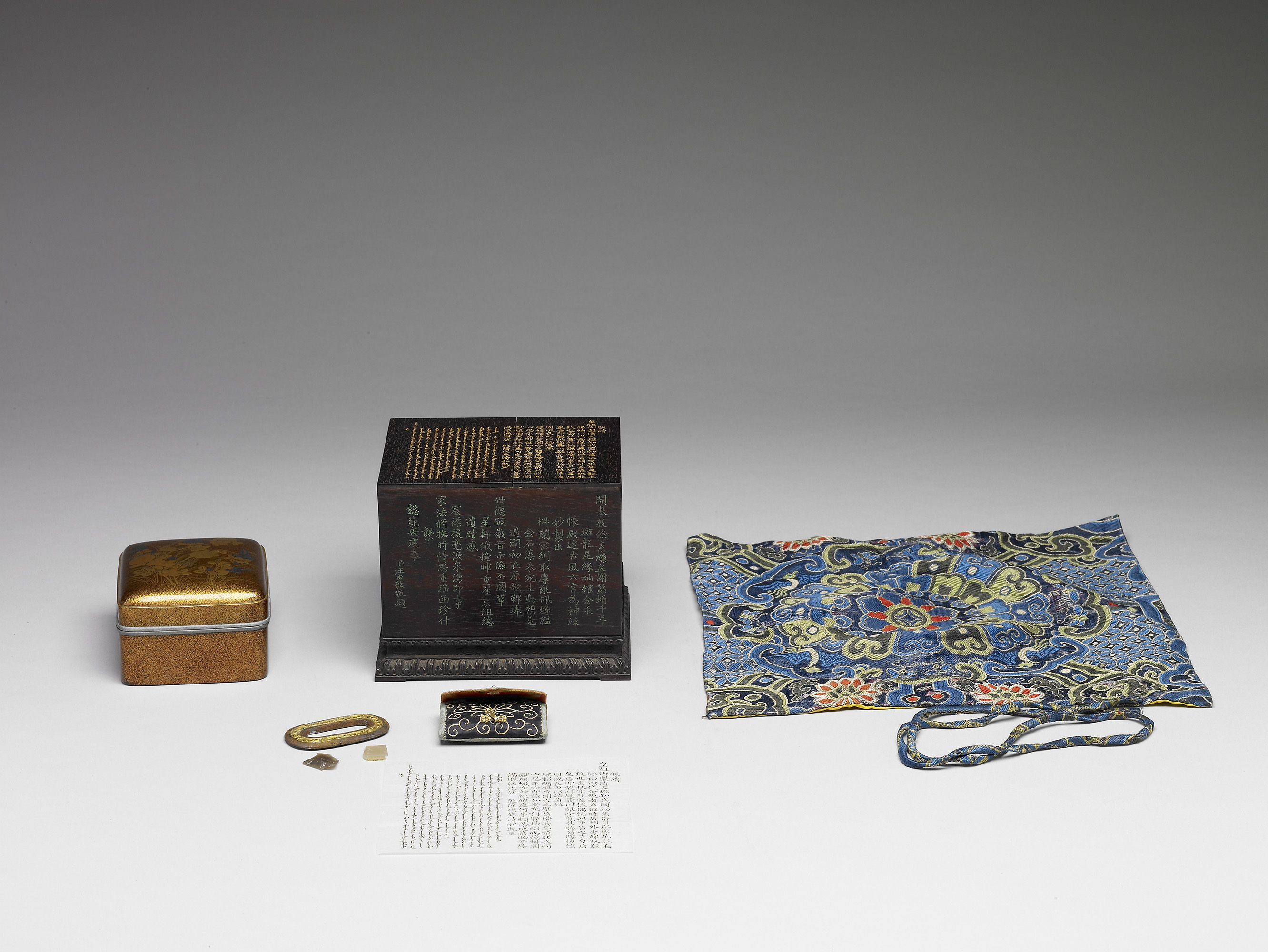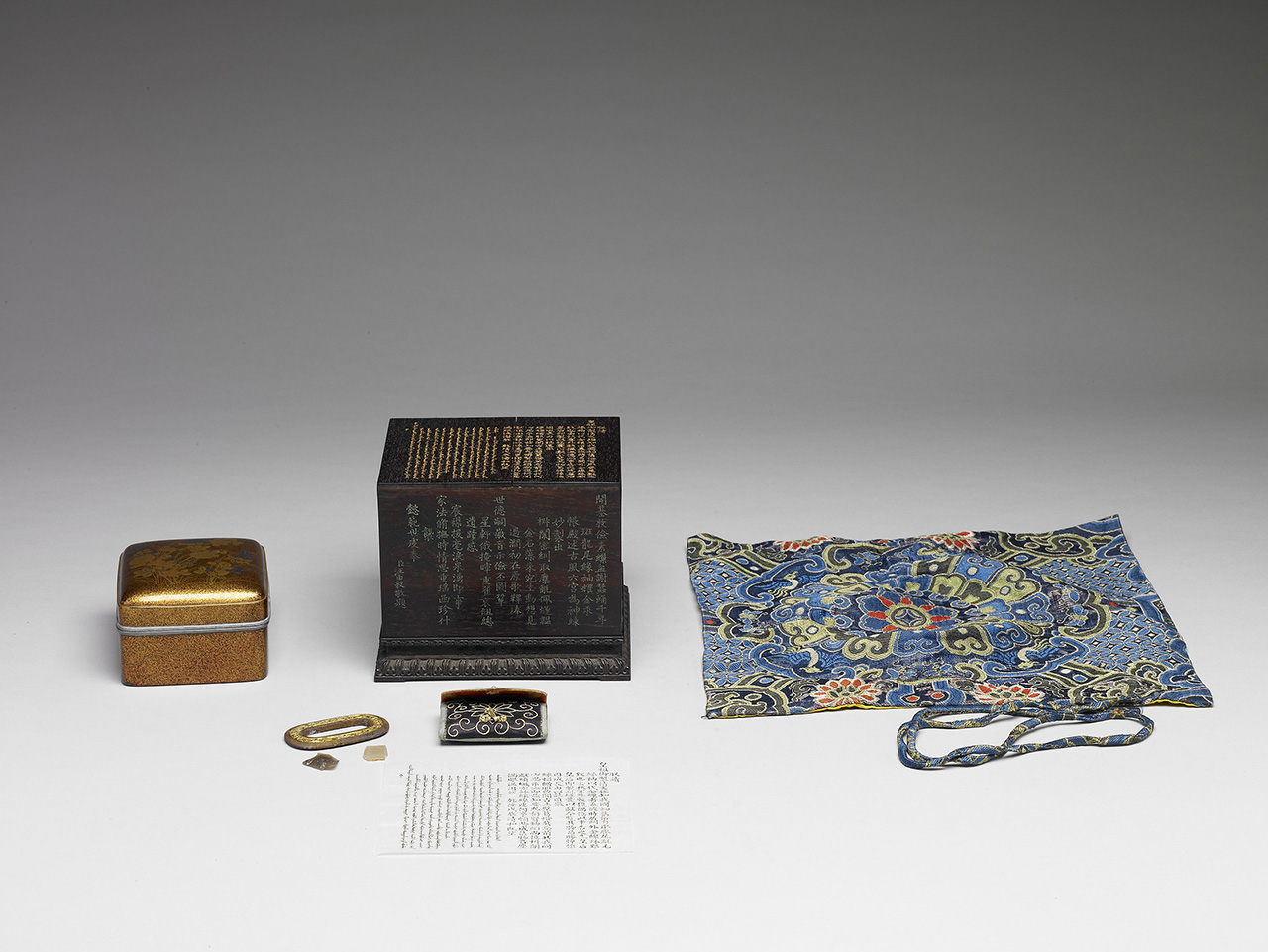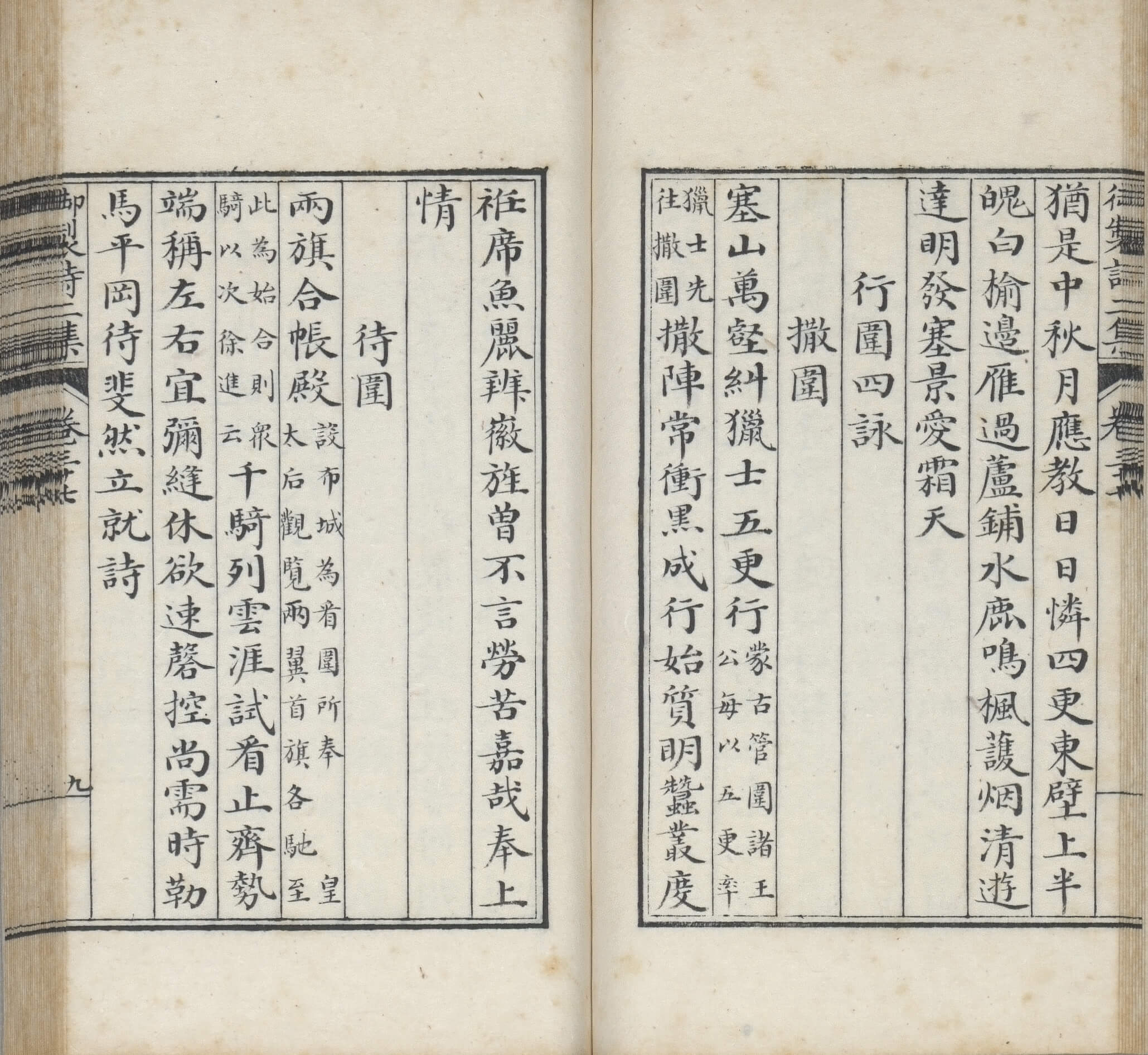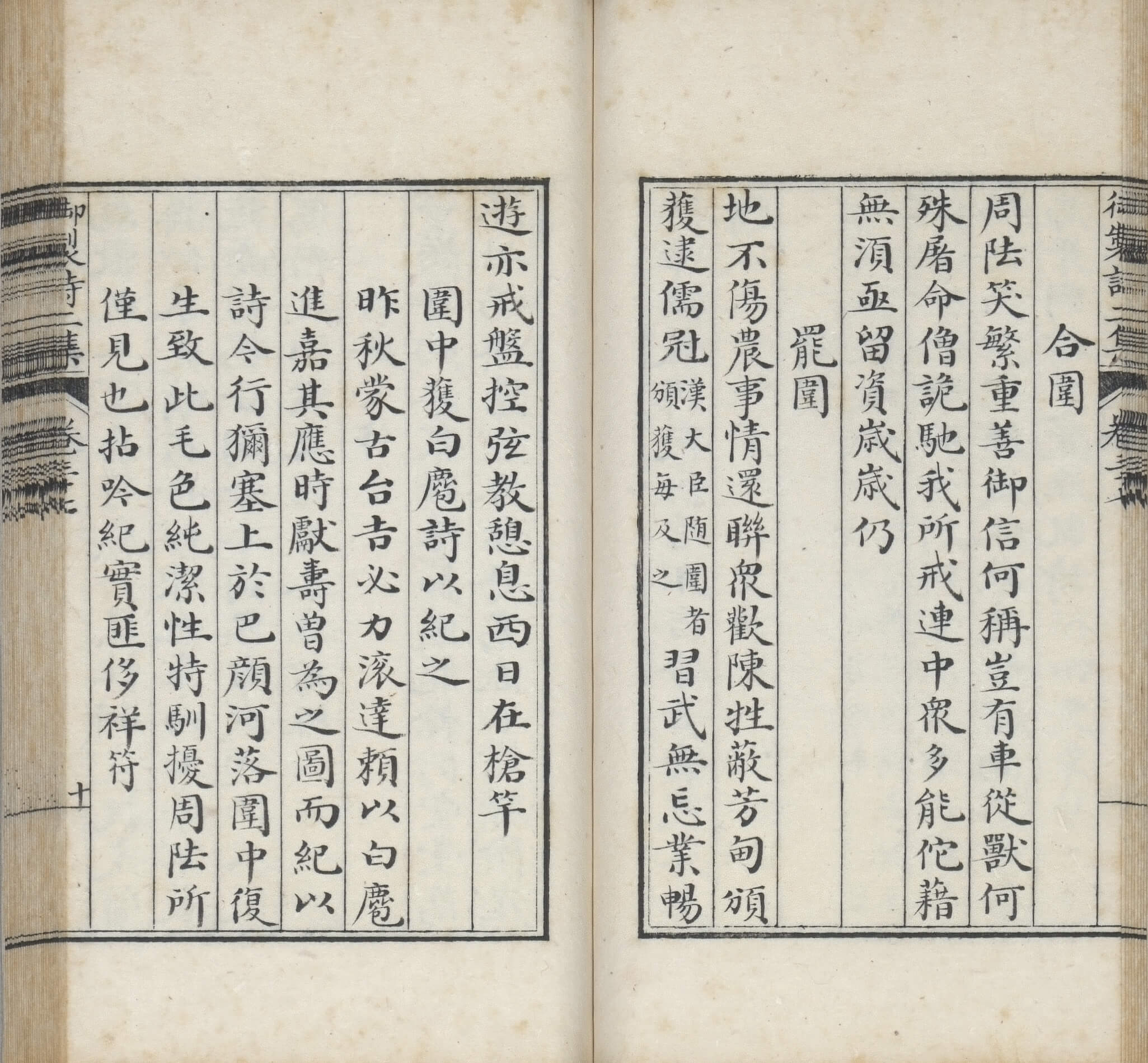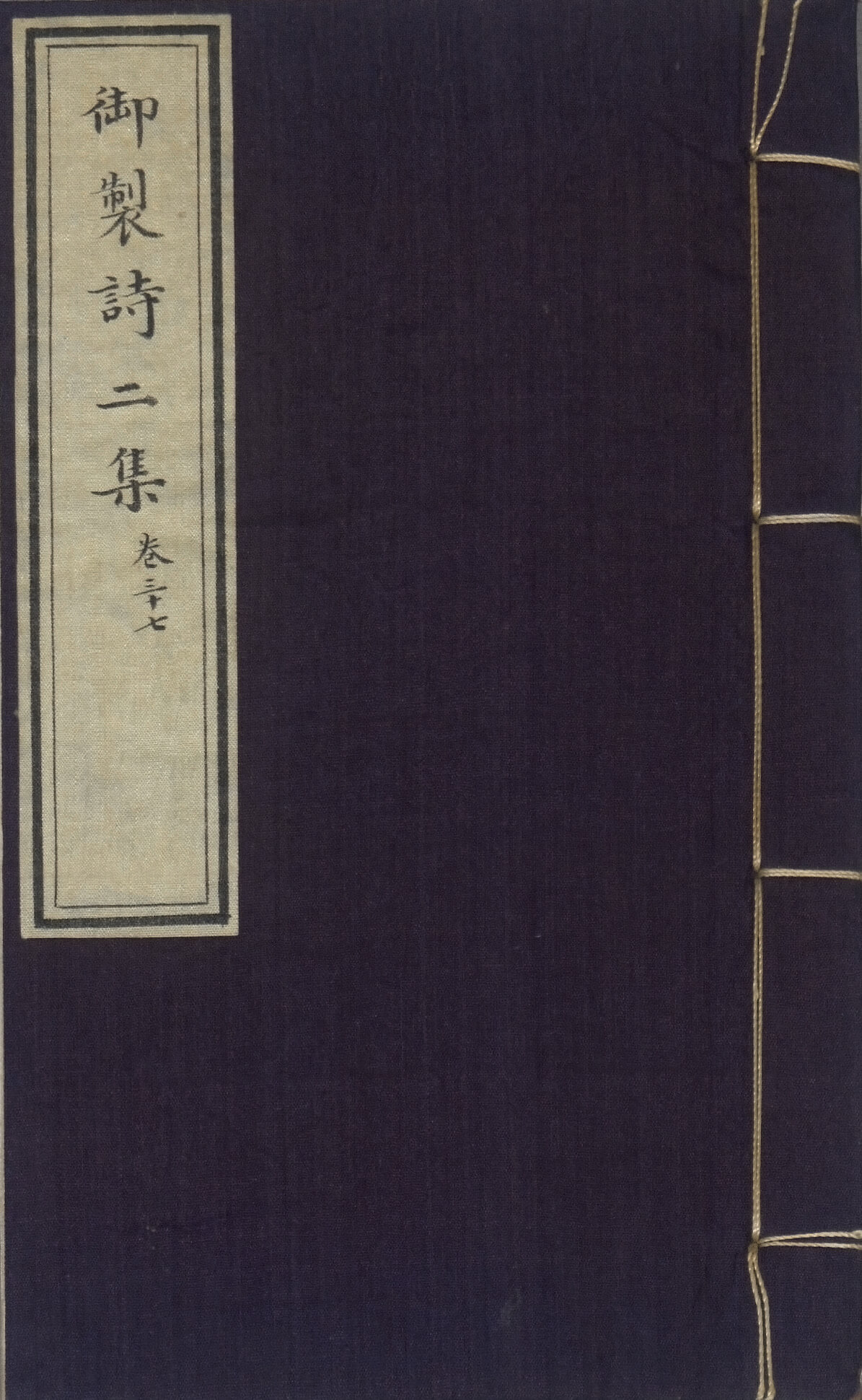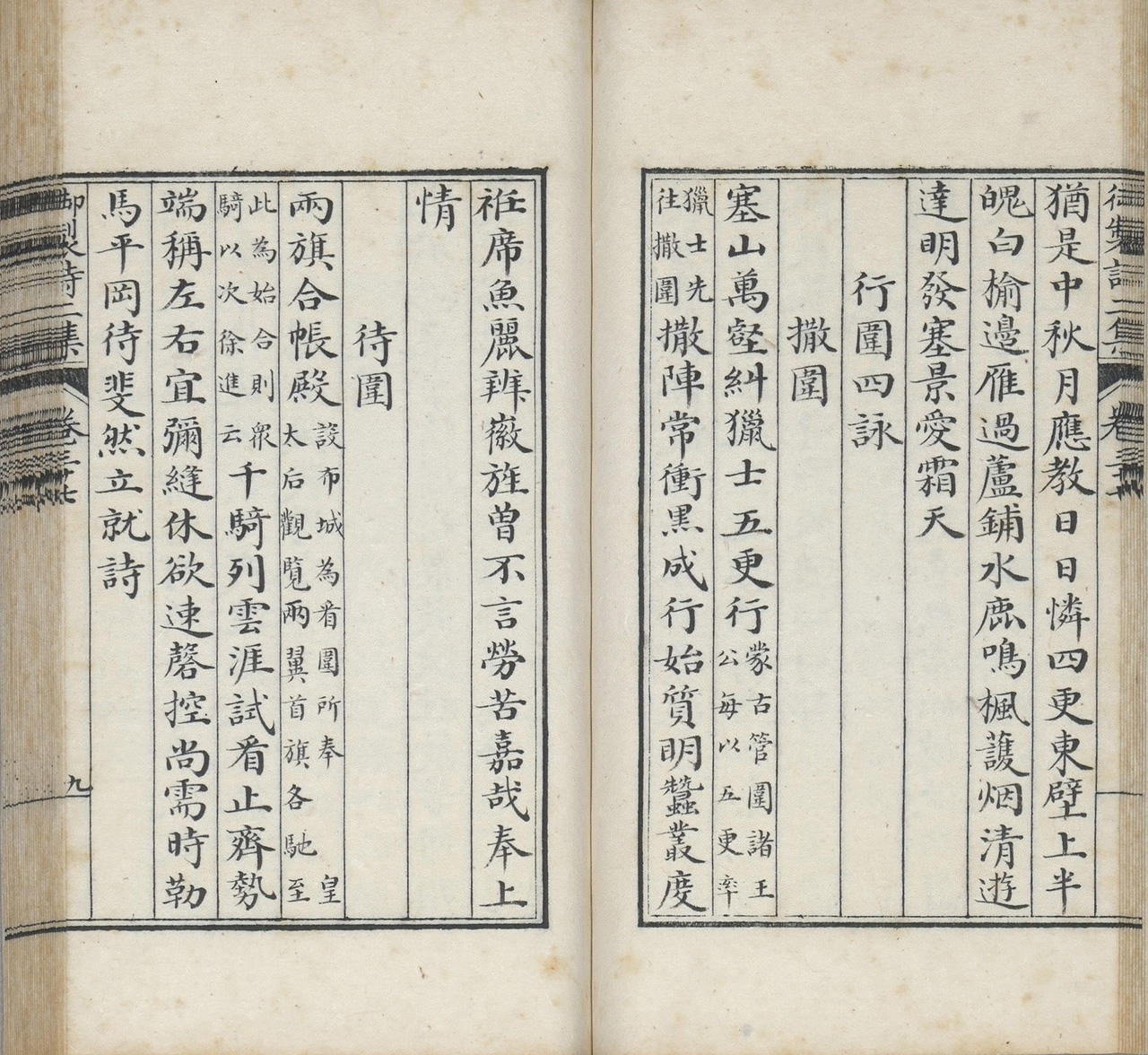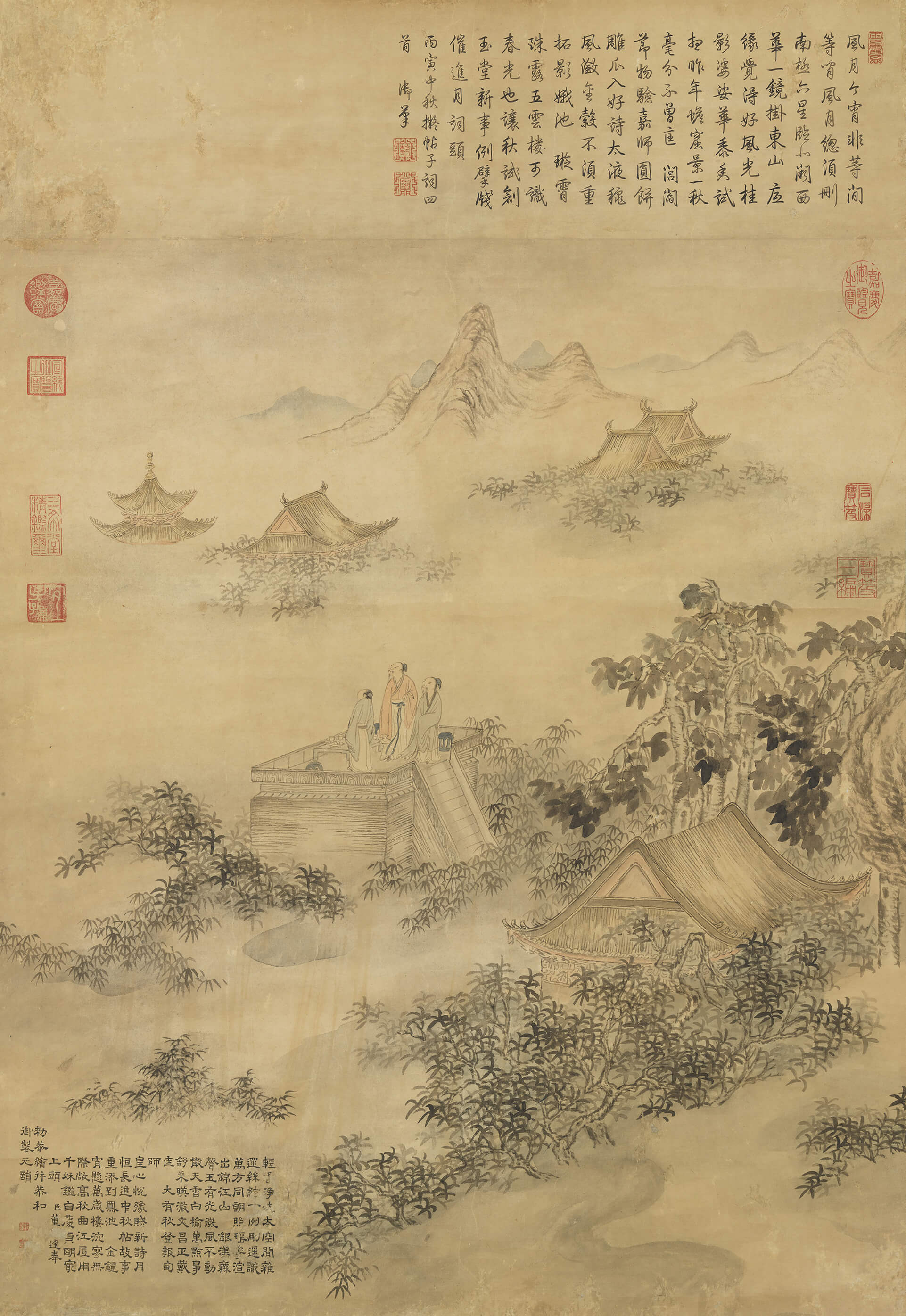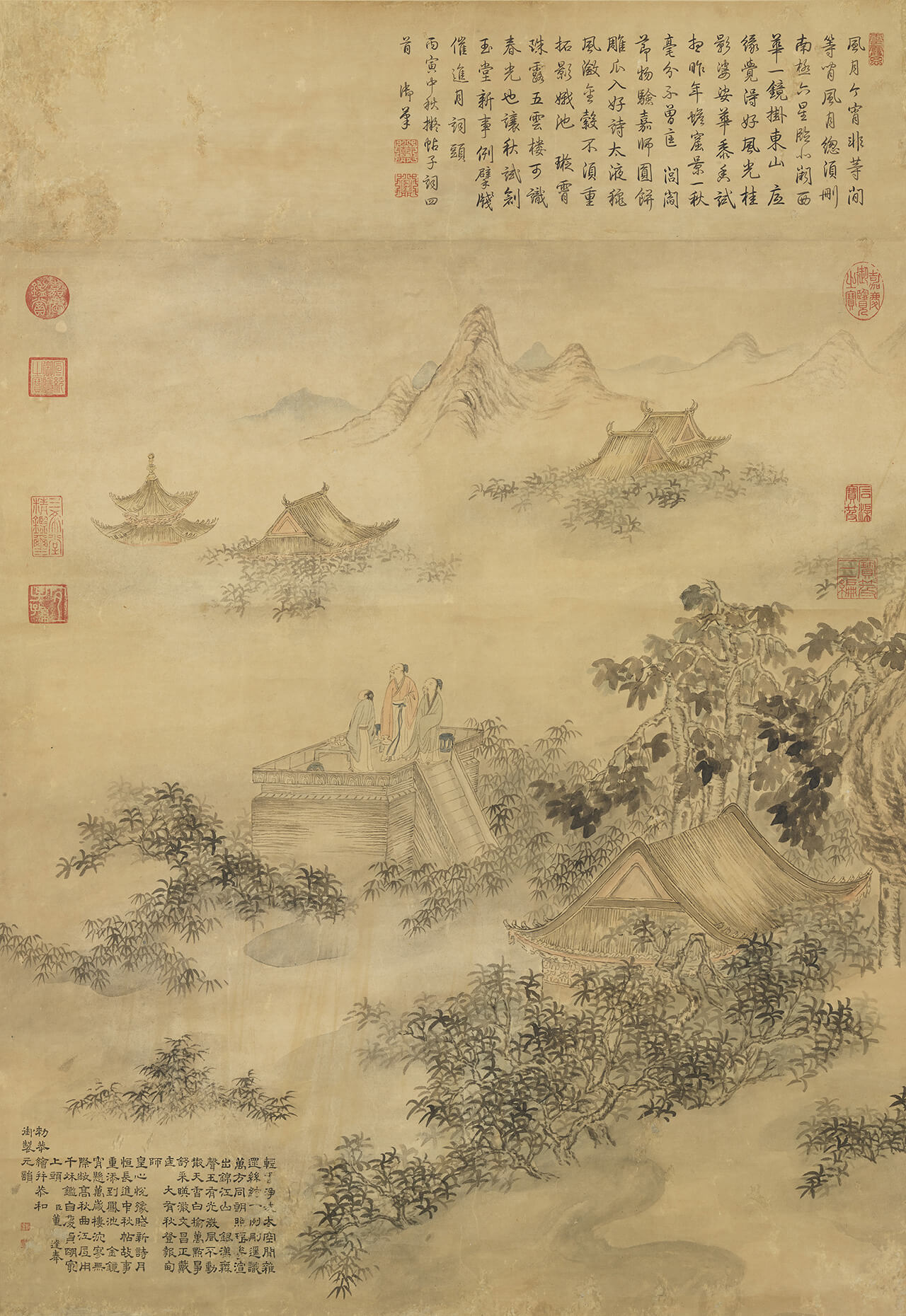Seasonal Rhythms
Traditional time was structured by celestial movements, ritual ceremonies, and the agricultural calendar. The Qing dynasty's sense of time merged Han Chinese customs with Manchu-Mongolian tradition, evolving into diverse forms that followed seasonal and natural changes. Through spring awakening, summer growth, autumnal harvest, and winter retreat, this cycle reveals the story of a year in the Qing dynasty.
Autumnal Harvest
- Flint pouch with embroidered floral decoration
- with flint, steel striker, lacquer case, brocade, and sandalwood storage box; imperial inscription in Manchu and Chinese
- Qianlong period (1736–1795), Qing dynasty
This flint pouch, embroidered with deer hair on navy fabric, originated at the Mulan Hunting Ground in 1747. The accompanying documentation in Manchu and Chinese scripts reveals that Empress Xiaoxian (1712–1748) crafted it after discussing deer-hair embroidery traditions with the Qianlong Emperor. Upon viewing it after her death the following year, the bereaved emperor composed commemorative verses. Marks from flint implements in the interior suggest active use, rendering it both a functional object and a testament to imperial devotion.
- Yuzhi Shi Erji (Imperially Endorsed Second Collection of Imperial Poems)
- Vol. 37
- Composed by Qianlong Emperor, compiled on imperial order by Jiang Pu et al.
- Miniature court manuscript
- Qianlong period (1736–1795), Qing dynasty
After the Mid-Autumn Festival, the Qing emperor led thousands of Manchu and Han officials, Mongol princes, and Banner troops on the 20-day Great Autumn Hunt. To govern Mongol territories effectively, princes who had not yet experienced smallpox performed hunting duties in rotation instead of Beijing court visits. These nobles participated in prescribed hunting protocols at the Mulan Hunting Grounds before proceeding to the Summer Mountain Resort, where they paid imperial respects through the Autumn Hunt Ritual—a ceremony that reinforced diplomatic bonds within the empire.
- Imperial Calligraphy: Mid–Autumn Festival
- Dong Bangda (?–1769), Qing dynasty
"The cloudy mountain sanctuary", one of the Thirty-six Scenic Views of the Chengde Summer Mountain Resort, served as the favored setting for Mid-Autumn Festival poetry composition. This poem dates to 1746, a year when the Qianlong Emperor notably remained in the capital during the festival. In addition to composing his own verses, he commanded court scholars to create poems in response, transforming the occasion into a shared literary celebration between sovereign and officials.
